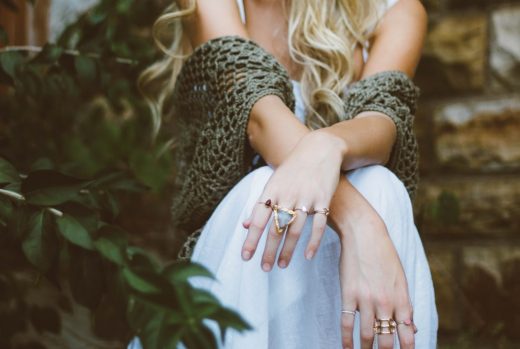
Today, there are not many issues that are as important and urgent as sustainability. Since the climate change is almost at the point of no return, we all need to do our best to examine our impact on the environment. While most topics concern gas, oil, farming and the fashion industry, jewellery is also a part of this conversation. It’s important to know that jewellery can be both beautiful and guilt-free. Every consumer needs to be aware of where their jewellery comes from and how sustainable it is. So, here are a few problem subjects and how to solve them to only end up with ethical jewellery.
Recycled metals
Did you know that the production of even the simplest of gold rings involves a process that can take a lot of time and effort? The process can span continents, which makes traceability a serious issue in the jewellery production industry. Also, it’s well known that the metal mining industry has a history of environmental devastation and labour abuse, so if you want to be responsible, buying gold or silver is tricky.
One thing we can be grateful for is the fact that most precious metals can be recycled with minimal or almost zero loss. So when buying jewellery, try to look for recycled precious metals from recycled jewellery pieces, electronics and medical equipment.
Man-made diamonds
Today, almost everyone is familiar with Blood Diamonds and their effects on the communities (civil wars, violence, labour exploitation, etc.) so these diamonds are out of the question for any responsible buyer. Also, mined diamonds usually change many owners over the years, so tracing their origin is very difficult.
If you’re desperate for some diamond bling in your life, it’s much more ethical to opt for man-made diamonds (or aboveground diamonds). These are identical to mined crystals since they grow in labs under the same conditions as those found in the Earth’s layers. However, their social or environmental impact is much smaller—they can be traced and harvested very easily. Engineers are growing these diamonds in controlled conditions which often produce zero carbon pollution, plus the lab staff gets paid fairly and works under good conditions.
Responsible brands
When buying your jewellery, make sure to visit the brand’s website and read their “about us” page or similar. Only when you find a brand that practices social activism and transparency, you can give them your money. No brands are perfect, but some are really trying their best to give back to the community and the planet. If you love nature, you can buy from Moon Magic and help plant trees since they donate to the charity “Trees for the Future” with every single order. Planting trees doesn’t only affect nature, but it helps families, creates jobs and increases income for poor farmers and workers.
Fairmined gold
Gold mining doesn’t have the cleanest history (it disrupts communities and wildlife, pollutes water, causes unfair labour), so more and more brands are trying to meet international sustainability standards. Today, you can find gold with Fairtrade and Fairmined certification which is awarded to companies that take working conditions, fair wages, proper chemical handling, women’s rights and child labour into account.
Second-hand jewellery
Buying second-hand jewellery is always the most sustainable option because used jewellery doesn’t require any new resources. And don’t think you can only get your jewellery from Goodwill. Many exclusive resale and vintage shops sell second-hand jewellery and accessories you can’t find anywhere else in the world. Also, you can trade with friends. If you used to prefer chunky jewellery, but are more into minimalism now, you can trade with your friends and end up with a drawer full of jewellery practically for free.
If you’re smart with your jewellery purchasing habits, you can be dripping in gold and jewels without any guilt!

